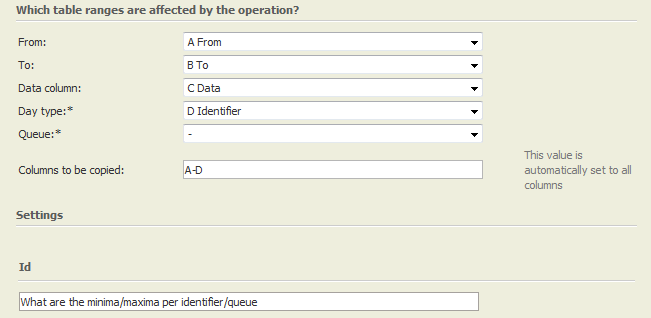Calculate Min/Max
Summary
Calculates the minimum and maximum of a set
- for nodes with 0-2 identifiers
- writes the result in a new column
Configuration
Input settings of existing table
Name | Value | Opt. | Description | Example |
|---|---|---|---|---|
From | System.DateTime | - | This is the From column of the data table. | "col1" |
To | System.DateTime | - | This is the To column of the data table. | "col2" |
Data column | System.Double | - | This column contains the data to be searched through. | "col3" |
Day type | System.String | opt. | Day type for a day-type based search. | "col4" |
Queue | System.String | opt. | Queue for a queue-by-queue search. | "col5" |
Remarks
- Day type can be used as an identifier
- Queue can be used as an identifier
- You can not use more than 2 identifier, if necessary you can summarize columns beforehand.
Want to learn more?
Screenshots

Examples
Example: Calculate Min/Max
Situation | This example shows you how to use the operator "Calculate Min/Max"  |
|---|---|
Settings |
Note:
|
Result |
|
Project File | - |
Troubleshooting
Problem | Frequent Cause | Solutions |
|---|---|---|
Amount identifier | You can not use more than 2 identifier. | If necessary you can summarize columns beforehand. |


